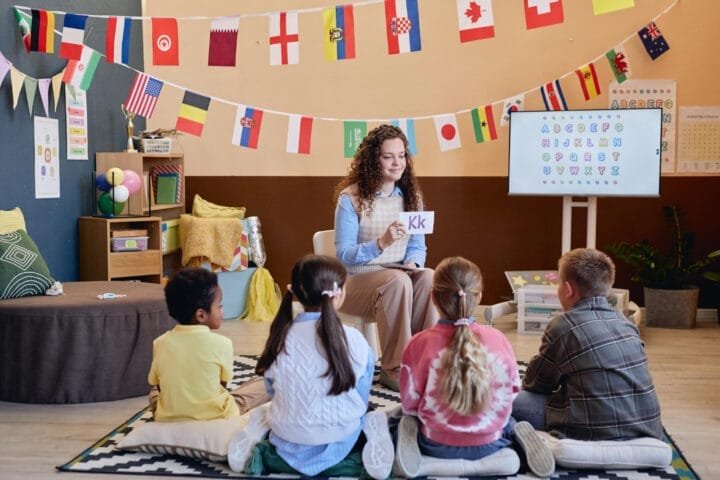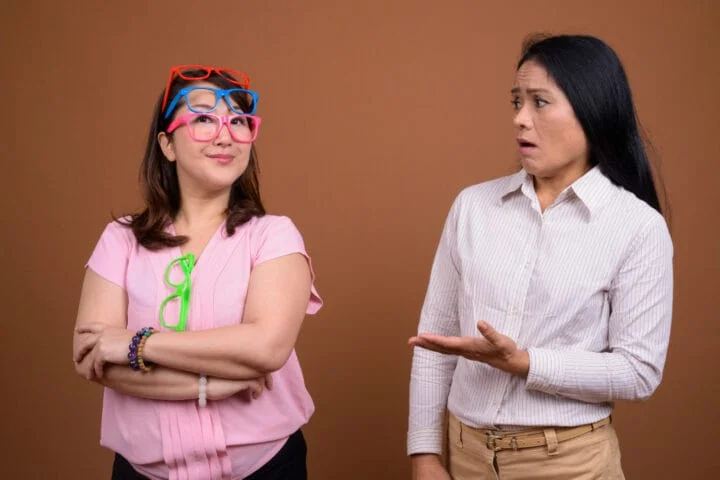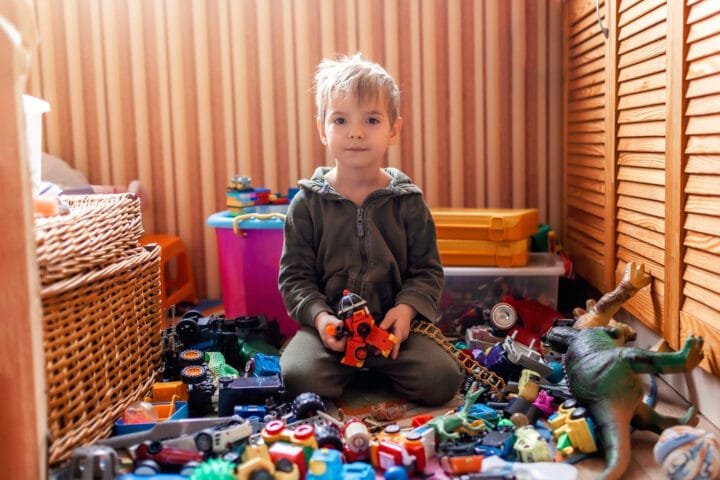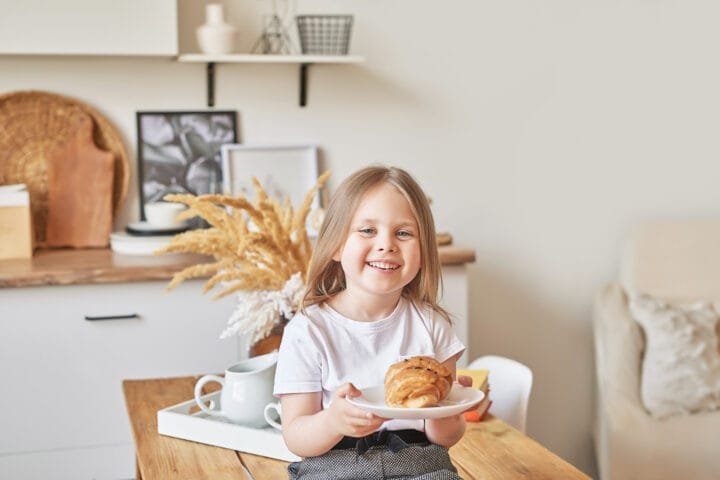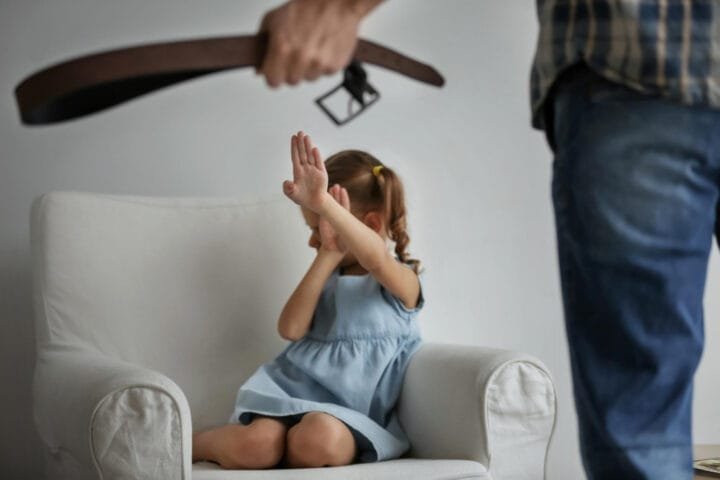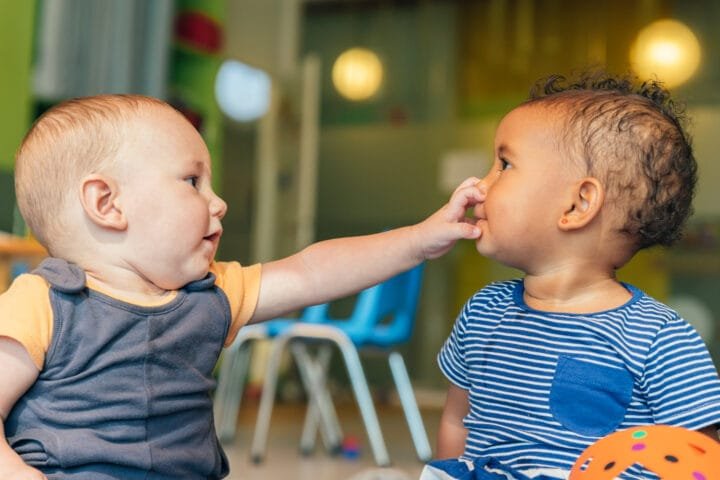The Night That Changed Everything: A Mom’s Guide to Conquering Your Child’s Fear of the Dark
Last Tuesday night changed everything. There I was, Netflix queue loaded, cozy blanket in position, when I heard those all-too-familiar footsteps creeping down the hallway. “Mommy, I can’t sleep. The dark is scary!” My 5-year-old Emma stood there, clutching her worn-out unicorn plushy, eyes wide with genuine fear.
Sound familiar? I bet you’re nodding right now.
After three kids and countless sleepless nights, I’ve become somewhat of an accidental expert in the “afraid of the dark” department. But here’s what nobody tells you – this journey isn’t just about getting your kid to sleep. It’s about something much bigger.
The Day I Finally Got It
Let me take you back to a moment that completely changed my approach. Emma was having her usual bedtime meltdown, and I was exhausted. Like, three-cups-of-coffee-barely-keeping-my-eyes-open exhausted. I was about to do my usual “there’s nothing to be afraid of” speech when something clicked.
Remember being a kid? When that coat hanging on the door transformed into a menacing figure? When every creak was definitely a monster under your bed? That’s their reality right now. Their imagination is in overdrive, and telling them “it’s all in your head” doesn’t help one bit.
What’s Really Going On in That Little Mind?
My friend Sarah, a child psychologist (and lifesaver), explained it to me over coffee one morning. “Think of a child’s brain like a brand new computer,” she said, dunking her cookie. “It’s super powerful but doesn’t have all the software installed yet to process things like adults do.”
She shared something that blew my mind – between ages 4 and 6, kids’ brains are literally rewiring themselves. They’re suddenly aware of all these new dangers (thanks, developing brain!), but they don’t have the tools to rationalize them yet. No wonder my sweet, brave-during-the-day Emma turns into a different child when the sun sets.
The Game-Changer That Worked for Us
Here’s where it gets good. One night, completely desperate after Emma’s third trip to our room, I tried something different. Instead of fighting the dark, we decided to make friends with it.
We started with what I call the “Darkness Adventure Game.” During the day – yes, the day – we’d practice being in the dark. We’d tell silly stories with flashlights, make shadow puppets, and even had dance parties with glow sticks. Emma named her shadows (there’s one called Bob who apparently loves to boogie).
The transformation wasn’t instant – let’s be real here – but holy moly, what a difference it made. Within weeks, bedtime went from battle zone to bearable. Then actually pleasant. Now? Emma proudly tells her little brother, “The dark is where all the magic happens!”
The Night Light Revelation
Let me tell you about the great night light debacle of 2023. I’d spent a small fortune on every fancy night light Amazon could ship to my door. You name it, we tried it – projector lights, color-changing orbs, even one that played lullabies (spoiler alert: it drove me absolutely bonkers after day three).
But here’s the thing nobody tells you in those online reviews. My daughter’s cousin Tommy sleeps like a champ with just a tiny plug-in light, while Emma needed what felt like stadium lighting to feel secure. Every kid is different, and that’s totally okay!
Our Bedtime Revolution
Remember how I mentioned making friends with the dark? Well, we took it next level. We created what Emma now calls her “Brave Cave.” Here’s what worked for us:
Picture this: It’s 7 PM, and instead of the usual “But I’m not tiiiired!” drama, we start our “power-down party.” First comes the “monster check” (really just us being silly, looking under beds and in closets), then story time with gradually dimming lights. Emma gets to be the “light boss” with a special dimmer remote – giving her control was a total game-changer.
The other night, she actually asked to turn the lights down MORE. I nearly fell off her bed in shock!
When Things Got Really Real
Here’s something I haven’t shared with many people. About six months ago, Emma’s fear got so intense that she started having physical symptoms – stomach aches, headaches, the works. I felt like I was failing her. Why couldn’t I fix this?
That’s when my mom (bless her wisdom) shared something that rocked my world. Apparently, I went through the exact same phase at Emma’s age. The difference? My parents tried the “tough love” approach, and guess what? I still sleep with a TV on at 35. Sometimes the “just deal with it” method isn’t the answer.
The Breakthrough Moment
It happened on a random Tuesday. Emma had just started first grade, and her teacher mentioned they were learning about space. That night, instead of our usual bedtime story, we watched videos about stars forming in darkness. We talked about how baby animals grow in dark, warm places, and how seeds need darkness to sprout.
Suddenly, darkness wasn’t the enemy – it was essential for growth. Mind. Blown.
The Secret Weapon That Changed Everything
Want to know what really turned things around? Community. I started a Facebook group for local parents dealing with the same issue. The ideas that came out of that group were pure gold.
One mom invented “brave breathing” – a simple technique where kids imagine breathing in golden light and breathing out their fears. Another created “darkness tickets” – special passes kids could use when they needed extra support at bedtime.
But my favorite came from a dad who turned his daughter’s fear into an opportunity for connection. Every night, they spend five minutes sharing their “brave moments” from the day. Not only did it help with the fear, but it also became their special bonding time.
The Reality Check No One Talks About
Let’s get real for a minute. Some nights still aren’t perfect. Last week, during a thunderstorm, Emma ended up in our bed. And you know what? That’s perfectly okay. Progress isn’t linear, and sometimes being a good parent means knowing when to bend the rules.
Dr. Martinez, Emma’s pediatrician, put it perfectly: “Children don’t learn to ride a bike in one day, so why do we expect them to master their fears overnight?”
The Unexpected Silver Lining
Here’s something beautiful I never expected. Helping Emma through this hasn’t just made her braver – it’s made her more empathetic. Last month, when her friend was scared during a power outage at school, guess who stepped up to be the comfort expert?
The Midnight Breakthrough That Changed Everything
Picture this: It’s 2 AM, and I’m sitting on Emma’s bedroom floor, both of us exhausted from another night of fear-fighting. That’s when she whispers something that stops me in my tracks: “Mommy, do stars get scared of the dark too?”
Bam! Just like that, we stumbled onto what became our greatest tool – curiosity. Instead of fighting the fear, we started exploring it. We turned her bedroom into what we now call our “Night Lab” (fancy name for a 6-year-old’s bedroom with glow-in-the-dark stars, but hey, it works!).
The Experiment That Actually Worked
Remember those science fair projects from school? We turned fear-fighting into our own little experiment. Every night, Emma would rate her fear level on what we called the “Brave-o-meter” – complete with stickers and everything. We tracked what helped and what didn’t.
Here’s what floored me: The nights when we spent just 10 minutes doing our “darkness training” during the day were the nights she slept best. Who knew? Apparently, exposure to darkness when you’re feeling safe makes it less scary when you’re feeling vulnerable.
The Kitchen Table Revolution
One morning, over chocolate chip pancakes (because sometimes parenting requires bribes), Emma asked if we could start a “Brave Kids Club.” My heart nearly burst. This same child, who three months ago wouldn’t even look at her closet after sunset, was now wanting to help other kids!
We started small – just Emma and her cousin Tommy. Now? We’ve got six kids who meet every other Saturday afternoon for what we call “Dark Adventures.” Parents take turns hosting, and let me tell you, watching these former fear-fighters become fear-fighters is something else.
When Technology Became Our Friend (Sort Of)
Let’s talk about the elephant in the room – screen time and sleep. I’d read all the articles about blue light and sleep disruption. But here’s what worked for us: we found this amazing app that tells bedtime stories about nighttime animals. Emma’s favorite? The one about Luna the owl who teaches baby animals why darkness is their friend.
But here’s the catch – we only use it during our wind-down time, never as a sleep crutch. Because let’s be honest, the last thing we need is another bedtime battle!
The Unexpected Teacher
You know who turned out to be our best ally in this journey? Our ancient cat, Mr. Whiskers. One night, Emma noticed how his eyes glowed in the dark. Instead of being scared, she was fascinated. We learned about how cats see in the dark, and suddenly, darkness became less mysterious and more magical.
Now, Mr. Whiskers has been promoted to “Official Darkness Safety Inspector” (complete with a paper badge Emma made him – which he thoroughly ignores, being a cat and all).
The Reality Check That Hit Home
Here’s something they don’t tell you in parenting books: sometimes our kids’ fears mirror our own. One night, during a particularly honest moment, I realized my own discomfort with darkness was subtly influencing Emma. Talk about a wake-up call!
I started working on my own relationship with darkness. Meditation, evening walks, stargazing – the whole nine yards. And you know what? As I became more comfortable, so did Emma. Kids really do learn from what we do, not what we say.
The Unexpected Gifts
This journey has given us so much more than peaceful nights. Emma’s emotional vocabulary has exploded. Instead of just saying “I’m scared,” she can now articulate exactly what’s bothering her. “Mom, my worry brain is telling me stories again” is now something we can work with.
And the proudest moment? Last week at her school’s sleepover, Emma was the one comforting her friends. The same girl who once needed three night lights and two stuffed animals to even consider closing her eyes was now the classroom’s resident “brave expert.”
The Truth About Progress
Let’s keep it real – we still have our moments. Full moon nights can be tricky, and don’t even get me started on daylight savings time (who invented that anyway?). But here’s the difference: now we have tools, understanding, and most importantly, confidence.
The 3 AM Club (Not the One You Want to Join)
Last night brought back memories. There I was, heading to the kitchen for my secret chocolate stash (don’t judge – we all have one), when I heard sniffling from Emma’s room. But this time was different. Instead of the usual fear, she was processing something else entirely.
“Mom, Jenny at school said only babies are afraid of the dark.”
Oh boy. Here comes the social piece nobody warns you about. Suddenly, we’re not just dealing with fear – we’re dealing with shame. And let me tell you, that’s a whole different ball game.
The Playground Politics of Fear
Here’s something they don’t cover in parenting books: how to handle it when your kid’s fears become social currency. The playground can be brutal, folks. But we found a way to flip the script.
Remember that Brave Kids Club I mentioned? Well, it evolved into something amazing. Emma started sharing her “brave tricks” with classmates. Before we knew it, being afraid wasn’t shameful anymore – knowing how to handle fear became the cool thing.
The Night Everything Changed
Picture this: a massive thunderstorm, power out across the neighborhood. Usually, this would be our worst nightmare (literally). But Emma? She grabbed her special flashlight and announced, “Time for a blackout adventure!”
I nearly cried right there. This kid, who once couldn’t handle a dimmed nightlight, was now leading her little brother on a shadow-puppet expedition. Talk about a full-circle moment!
Our Secret Sauce (And Why It Actually Works)
Let me share something that transformed our approach. We started what we call “Darkness Training Sessions” – but here’s the twist: they happen during the day. Yep, you read that right.
We close the curtains, play with shadows, and practice our “brave breathing” when the sun’s still up. It’s like learning to swim in the shallow end before diving into the deep. And just like swimming, these skills transfer when they’re really needed.
The Unexpected Alliance
Want to know who became our biggest helper? Emma’s 10-year-old cousin Max. He shared his own “used to be scared” stories, and suddenly, fear wasn’t this endless tunnel anymore – it had an exit. Kids need to see that path forward, and sometimes it’s more believable coming from another kid.
The Science Behind the Success
Okay, storytime with a side of science (don’t worry, I’ll keep it interesting). Dr. Sarah, my friend the child psychologist, explained why our approach was working. Apparently, when kids face their fears in a controlled, supportive environment, their brains literally rewire themselves.
Think of it like updating your phone’s operating system. Each positive experience with darkness installs new software that helps process fear differently. Cool, right?
The Nighttime Toolbox
We created what Emma calls her “Brave Kit.” It’s not just about night lights anymore. Inside her special box (decorated with more glitter than I care to vacuum), she keeps:
Her “worry stones” – smooth pebbles we collected from the beach A special flashlight that projects stars A journal for drawing her “brave moments” And my personal favorite – a tiny bottle of “sweet dreams spray” (just water with a drop of lavender, but shhh!)
When Plans Go Sideways
Let’s be real for a minute. Sometimes, despite all our tools and tricks, fear wins the battle. Like during last month’s sleepover attempt. Emma made it until midnight before calling for pickup, and you know what? That’s okay too.
Progress isn’t about never feeling scared. It’s about having the confidence to try again. The next morning, instead of feeling defeated, Emma was already planning her next sleepover strategy.
The Ripple Effect
The most beautiful part of this journey? Watching how it spreads. Emma’s teacher recently asked her to help another student who was struggling with classroom darkness during movie time. My little fearful kindergartener has become a third-grade fear-fighting coach!
The Birthday Party That Changed Everything
Speaking of spreading courage, let me tell you about Emma’s 8th birthday party. Instead of the usual bounce house or princess theme, she asked for a “Brave in the Dark” celebration. My jaw dropped. This kid continues to amaze me.
We transformed our basement into a glow-in-the-dark wonderland. Fifteen kids armed with UV face paint and light-up wands, playing games like “Monster Tag” and “Shadow Friends.” Parents kept asking me for tips, and there I was, thinking back to those tearful nights just months ago.
The Late-Night Confessions
Here’s something raw and real: Last week, during our nightly chat, Emma confessed something that hit me right in the feels. “Mom, sometimes I still get scared, but now I’m proud of being scared and brave at the same time.”
Excuse me while I ugly cry for a moment.
The Kitchen Counter Revelation
You know those moments when wisdom hits you over your morning coffee? Well, mine came while watching Emma make her own breakfast. She accidentally spilled milk in the dark corner of the kitchen and, instead of freaking out, simply said, “Good thing darkness can’t make cereal taste bad!”
I nearly spit out my coffee. When did my little scaredy-cat become this philosophical genius?
The Unexpected Teacher Becomes the Student
Remember Mr. Whiskers, our “Official Darkness Safety Inspector”? Well, he recently got a apprentice – Emma’s new kitten, Luna. Watching Emma teach Luna “there’s nothing to be afraid of” in her gentle, understanding way showed me just how far we’d come.
“See, Luna? Shadows are just light playing hide and seek!” Who’s the expert now?
The Grandma Effect
My mom visited last month and couldn’t believe the transformation. The same kid who used to call her in tears during our weekly FaceTime chats now gives “darkness tours” of her room. Though I suspect Grandma’s “special brave cookies” (chocolate chip, of course) helped sweeten the deal.
When Life Throws Curveballs
Last week’s power outage would have been a nightmare scenario six months ago. Instead, Emma declared it “adventure time” and led her little brother on a flashlight safari through the house. They discovered that dad snores (shocking), the fridge makes weird noises, and shadows can tell better stories than Netflix.
The School Project That Went Viral
Emma’s science fair project “Why We’re Afraid of the Dark (And Why We Shouldn’t Be)” won first place. But the real victory? The line of parents asking for copies of her “brave strategies.” My little girl, teaching adults about facing fears – talk about full circle!
The New Normal
These days, our bedtime routine looks nothing like the anxiety-filled marathon it used to be. Sure, we still have our moments – especially during thunderstorms or after watching slightly-too-spooky movies (looking at you, certain animated films).
But now? Now we have tools. We have understanding. Most importantly, we have confidence.
The Letter That Made Me Cry
Yesterday, Emma wrote a letter to her “old scared self.” Part of it read: “Dear Me, It’s okay to be scared. But guess what? The dark has all the best secrets, like stars and fireflies and daddy’s loud sleeping noises. You’re going to love it someday.”
Looking Forward
As I write this, sitting in Emma’s room while she peacefully sleeps (with just one small night light now!), I realize this journey taught us both so much more than just handling fear. It taught us about patience, understanding, and the incredible strength that lives inside these little hearts.
To all you parents out there, fighting the good fight against bedroom monsters and shadow fears – hang in there. Your breakthrough moment is coming. And when it does, it’ll be more beautiful than you ever imagined.
Fear of the dark can emerge at any age, but typically shows up between ages 2-9, with a noticeable peak around ages 5-7. It’s completely normal and actually signals healthy brain development. During these years, children’s imaginations become more sophisticated, but their logical reasoning skills are still developing. That’s why a perfectly rational child during daylight hours might suddenly see monsters in every shadow at bedtime.
The key is creating a consistent, calming bedtime routine that gradually transitions from light to darker environments. Start where your child feels comfortable and make small adjustments over time. Rushing the process or forcing complete darkness typically backfires. Instead, give children some control over their environment while teaching them coping strategies. Simple tools like dimmer switches, timer lights, or special “brave” objects can make a huge difference.
Sudden fear of darkness often coincides with developmental milestones, life changes, or new experiences. It could be triggered by starting school, moving to a new house, watching a scary show, or simply reaching a new cognitive stage where they become more aware of potential dangers. Their growing imagination and understanding of the world can sometimes manifest as new fears.
While fear of the dark is usually normal, watch for signs that might indicate a need for additional support:
- Fear that significantly disrupts daily activities
- Physical symptoms like constant headaches or stomach aches
- Extreme anxiety about darkness during daytime hours
- Panic attacks or severe distress that don’t improve with consistent support
- Fear that persists intensely despite months of gentle intervention
Success comes from a combination of approaches:
- Practice coping skills during daylight hours
- Create positive associations with darkness through fun activities
- Establish consistent, calming bedtime routines
- Give children appropriate control over their environment
- Validate feelings while building confidence
- Use gradual exposure techniques
- Make darkness familiar through supervised exploration
- Teach simple relaxation techniques
- Encourage open communication about fears
- Celebrate small victories in managing fear
Top 5 Must-Read Books for Helping Children Overcome Fear of the Dark (2025 Amazon Bestsellers)
This charming tale follows Georgie, who’s afraid of the night, and Dragon, who’s afraid of knights. Through clever wordplay and beautiful illustrations, the book helps children understand their fears while providing gentle humor. The story’s unique approach of pairing two different fears makes it relatable and engaging for young readers.
A beloved classic that has helped generations of children overcome their fear of the dark. Using humor and clever thinking, this follow-up to “There’s a Nightmare in My Closet” shows children practical ways to tackle their nighttime jitters. The book’s enduring popularity speaks to its effectiveness in addressing common childhood fears.
This innovative story features Orion, who’s scared of everything, but especially the dark. One night, Dark itself comes to visit and takes Orion on an adventure that changes his perspective forever. The book’s creative approach to personifying darkness helps children see their fears in a new, less threatening light.
From the bestselling author of “A Series of Unfortunate Events” comes this masterfully crafted story about confronting fears. Through sophisticated humor and understanding, Snicket helps children see darkness not as an enemy, but as a natural part of life. The book’s unique narrative style and stunning illustrations make it a standout choice.
While not exclusively about fear of the dark, this beloved book teaches children resilience and positive thinking through Pete’s adventures. The story’s musical elements and repeated phrases make it perfect for building confidence and creating positive associations with challenging situations. It’s an excellent tool for developing emotional resilience that can be applied to fear of the dark.























